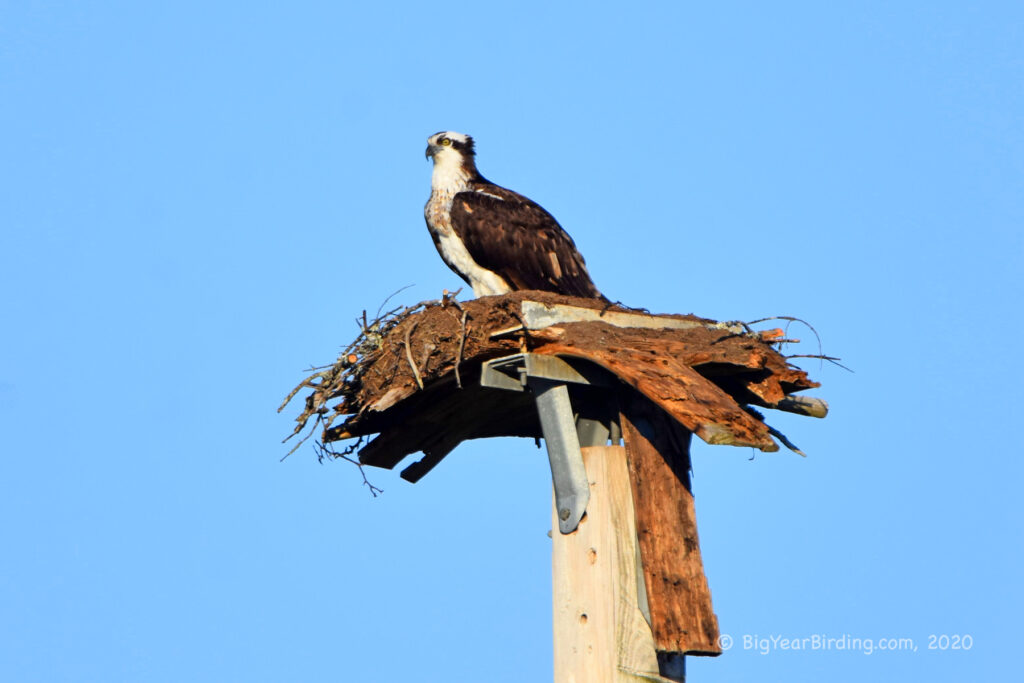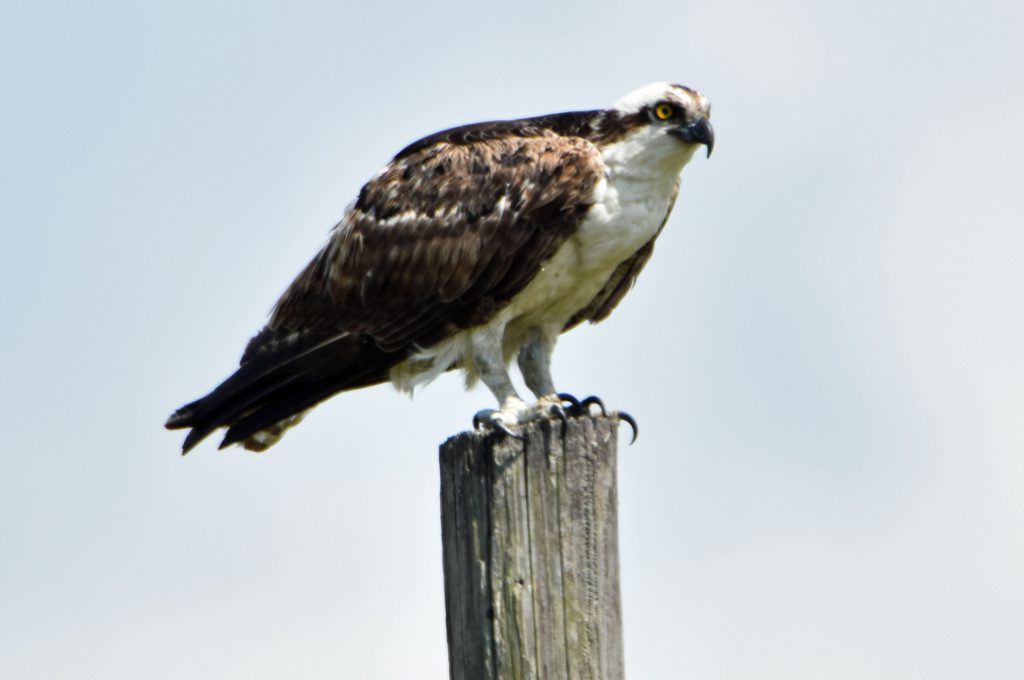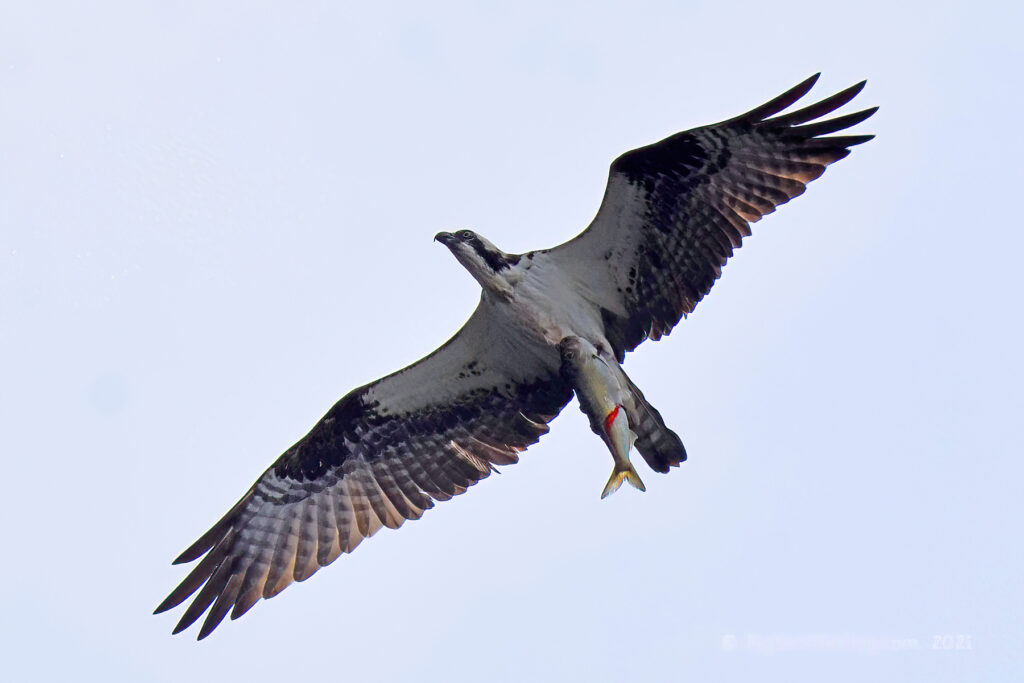
The Osprey, also known as the fish hawk or sea hawk, is a distinctive bird of prey found throughout much of the world. These impressive birds are approximately 21-24 inches long with a wingspan of 54-72 inches. Females tend to be larger than males, weighing in at around 3-4 pounds while males weigh 2-3 pounds. Ospreys are identifiable by their distinctive plumage, which features dark brown upperparts, white underparts, and a white head with a dark eye stripe.
One of the most distinguishing field marks of the Osprey is its powerful talons, which are specially adapted to catch fish. These birds have reversible outer toes that allow them to grasp prey with two toes in front and two toes in back, creating a more secure hold. Ospreys also have excellent vision, which they use to locate fish from high above the water. They can spot fish up to 100 feet below the surface and then dive down at speeds of up to 50 miles per hour to catch their prey.
Ospreys are migratory birds, and their range covers much of North America, Europe, and Asia. During the breeding season, Ospreys can be found in a variety of aquatic habitats, including rivers, lakes, and coastal areas. After breeding, they migrate to wintering grounds in Central and South America. The exact timing of migration can vary depending on location, but most Ospreys begin their journey in late summer or early fall and return to their breeding grounds in the spring.
In recent years, the Osprey population has faced some challenges, particularly due to the use of pesticides and habitat loss. However, conservation efforts have been successful in many areas, and the Osprey is now considered a species of least concern by the International Union for Conservation of Nature (IUCN). The rebound of Osprey populations can be attributed in part to the installation of artificial nesting platforms, which have provided additional nesting sites and helped to support breeding success.

Overall, the Osprey is an impressive bird with unique adaptations that allow it to thrive in aquatic habitats. Its distinctive appearance and impressive hunting skills make it a favorite among birders and nature enthusiasts alike. With continued conservation efforts, we can ensure that these amazing birds will continue to grace our skies for generations to come.

